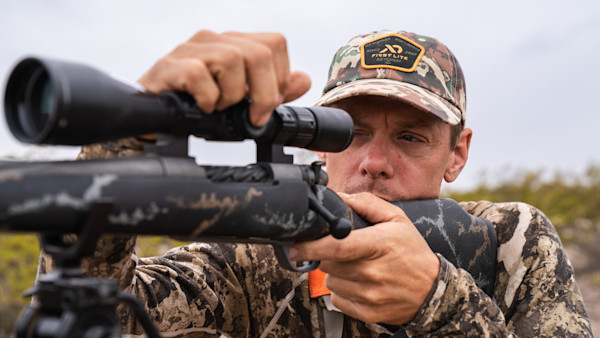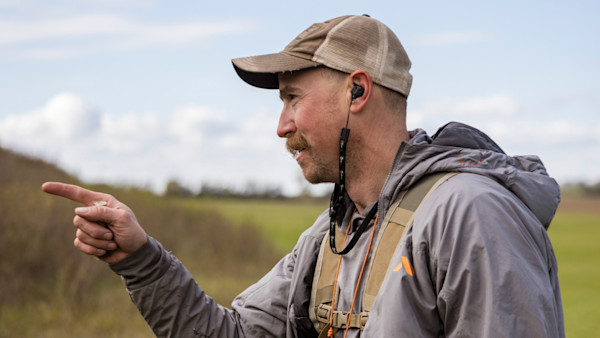Of the major advancements in handheld firearm technology over the last seven odd centuries, barrel rifling has improved accuracy, and thus efficacy, more than any other.
“Rifling” simply refers to the spiraling lands and grooves cut along the length of the bore that engage with the projectile and spin it in a repeatable fashion. Combined with the cylindro-conical bullet shape we know today, rifling turned long guns from spray-and-pray muskets into precision deer-killing instruments.
Most hunters understand what rifling is and why it’s important, but do you know what twist rates your rifles use? Do you know the bullet weights those twists are designed for, and why those rates have been increasing over time? If you responded to those questions with a shrug, this article is for you.
What is Twist Rate?
A barrel’s twist rate is expressed as a ratio. You may see numbers like 1:8, 1:10, or 1:12 stamped on a barrel or listed in an owner’s manual. This simply means that the lands and grooves rotate the bullet one complete turn for however many inches the second number delineates. So, if you’re shooting a 140-grain bullet from a 1:8 barrel, that barrel will rotate the bullet one full turn every eight inches.
The thing to keep in mind is that the lower the second number, the faster the rate of spin. Assuming the same bullet velocity and barrel length, a 1:9 twist barrel will spin the bullet more slowly than a 1:7 twist barrel.
Rifling can also be “right-handed,” meaning the grooves spiral clockwise when looking down the barrel from the breech end, or “left-handed,” meaning the opposite. This rotational direction must be accounted for when shooting at long ranges (because the spin will pull the bullet in that direction), but that’s the kind of math I let the ballistics app worry about.
Why Does It Matter?
Much like an NFL-sized football requires a different rate of spin to fly straight than a peewee-sized ball, bullets of varying masses and dimensions traveling different speeds require different twist rates. A bullet that is not properly stabilized will end up wobbling like a lame duck. It will eventually tumble and “keyhole” and probably won’t hit what you’re aiming at.
As a general rule, heavier, longer bullets require faster twist rates than shorter, lighter ones. Most modern, high-BC bullets fall in the former camp, so they require barrels with faster twist rates to stabilize and fly accurately. This is why, as we continue to prioritize bullets with high ballistic coefficients, we’ll continue to see barrels with faster twist rates.
It’s important to note that you may be shooting bullets that are too heavy for your rifle’s twist rate without seeing keyholes in your target paper. Your rifle may simply be shooting large groups or you might see more of an oblong hole rather than a round one. If that happens, it’s worth making sure you’ve properly matched twist rate and velocity with the bullets you want to use.
Bullet makers use fancy formulas to recommend optimized twist rates for specific bullets and cartridges. Some also offer twist rate stability calculators so you can find a minimum twist rate that will stabilize the bullet/cartridge you plan to use at various velocities. Those are great tools for someone who wants to purchase a custom rifle or reload cartridges with a specific kind of bullet that might not be available from the factory.
If that doesn’t describe you, you should know that modern rifle makers generally use twist rates that can stabilize the most common bullets for whatever cartridge the rifle is chambered for. Here are some common twist rates for a few popular hunting cartridges:
| Cartridge | Twist Rates |
| .223 Rem | 1:7, 1:8, 1:9 |
| .243 Win | 1:9, 1:10 |
| 6.5 Creedmoor | 1:8 |
| 6.5 PRC | 1:8 |
| 270 Win | 1:10 |
| 277 Fury | 1:7 |
| .308 Win | 1:10, 1:12 |
| .30-06 Sprg | 1:10 |
| .300 Win. Mag | 1:10 |
| 300 PRC | 1:9 |
You’ll notice that the newer cartridges like the 6.5 Creedmoor, 6.5 PRC, .277 Fury, and 300 PRC use faster twist rates to accommodate modern, high-ballistic coefficient bullets. Part of this trend is thanks to the recent interest in long-range shooting. Bullet makers have found that at longer ranges, bullets of all calibers tend to fly more consistently if they are spinning faster. Fast rotation allows the bullet to maintain its gyroscopic stability at greater distances and overcome things like wind and transonic shockwaves.
Each of the twist rates listed above will be able to accommodate the majority of bullet options available for that cartridge, but the .223 Rem. is an exception. The most common twist rates–1:7, 1:8, and 1:9–don’t all work well with bullets across the factory-loaded spectrum. The 1:7 twist works well with 62-grain bullets and heavier, but some report accuracy issues with the lighter, 55-grain bullets (though not everyone agrees with this). Barrels with a 1:8 twist can handle the middle range of bullet weights but may struggle more at the extremes. The 1:9 twist is ideal for 55-grain and lighter, which are most commonly used by varmint hunters.
I remember a friend of mine trying to sight in a 1:9 twist AR-15 using 77-grain bullets. The gun shot all over the place until he switched to 55-grain projectiles. The gun started shooting excellent groups, and all he did was switch bullet weights.
Can You Go Too Fast?
A too-slow twist rate will cause the wobbling discussed above. But what about a too-fast twist rate? Some assume a too-fast twist rate will cause a bullet to break apart. That can happen in extreme situations and with very lightly jacketed bullets, but modern bullet manufacturing makes this less likely. There could be some bullet deformation if you’re using an extremely fast twist rate, such as 1:5, but you’ll probably never find a rifle that uses such a fast twist rate.
Illustrating this point is the fact that the Berger twist rate stability calculator doesn’t have a category for “too fast.” A result of less than one specific gravity (SG) renders the bullet unstable, but the app says that anything greater than 1.5 offers “comfortable stability.”
Now, that doesn’t mean there are no downsides to a faster twist rate. A bullet will encounter more resistance moving down a fast-twist barrel and could cause more wear and tear on the rifling. But much like the disintegrating bullet, this will only be seen at the extremes. If you’re shooting a 1:8 6.5 Creedmoor, the barrel throat will wear out long before the lands and grooves.
A bullet can also be twisted too fast for maximum penetration at close range. As a bullet leaves the muzzle, it wobbles a bit as it spins before it “goes to sleep” and rotates smoothly (toy tops do the same thing). If the bullet strikes the animal before settling down, it might not penetrate properly. Again, this is an extreme use case and not applicable to most North American hunters, but I thought it was worth mentioning for all you elephant hunters out there.
Last Shot
Many hunters go their entire lives without thinking much about twist rate. There’s nothing wrong with that. Most factory guns are twisted to shoot most factory loads, especially if you’re using a modern firearm with a cartridge that’s been out for a long time. But if you want to dive a little deeper into how your rifle works and how you can optimize it for accuracy, understanding twist rates is one place to start.
Related

Conservation News
Why Hunters and Anglers Should Care About Nature-Based Climate Solutions



Public Lands & Waters
What President Biden's "30x30" Plan Means for Hunters and Anglers


Conversation